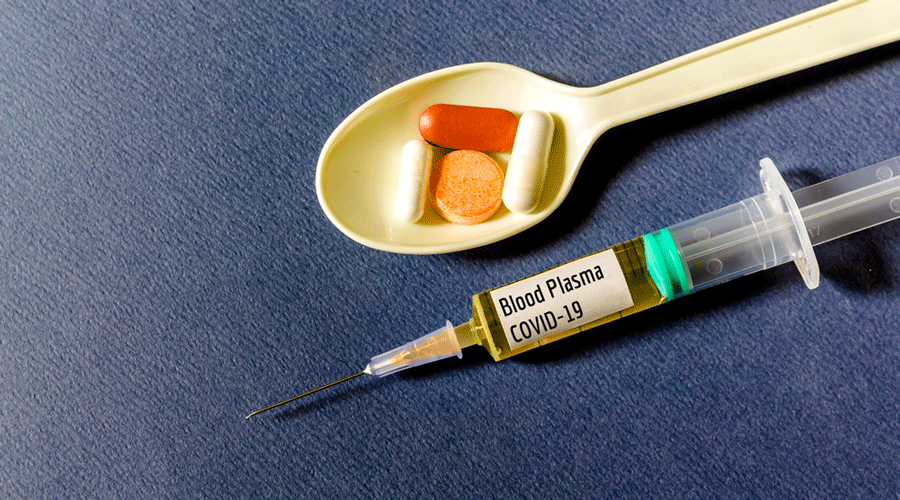The Bengal health department on Monday issued guidelines for the transfusion of convalescent plasma in treatment of Covid patients to prevent “inadvertent use of Covid-19 Convalescent Plasma (CCP)”.
The guidelines said some “physicians are using Convalescent Plasma (CCP) without focusing on actual indications of CCP transfusion which is not in accordance with the recommendations available in the national and international publications”.
Convalescent plasma, isolated from patients who have recovered from Covid-19, contains antibodies against SARS-CoV-2, the virus that causes the infection.
The guidelines, issued by the state’s directors of health services and director of medical education, also stated that plasma “should be transfused within 3-7 days from the onset of symptoms and not later than 10 days”.
The plasma transfusion should be done only on patients who have “mild to moderate illness, classified based on respiratory rate, oxygen saturation, lung infiltration in 24-48 hours”. The objective is to “arrest disease progression and prevent the need for mechanical ventilation”, the guidelines stated.
The Indian Council of Medical Research (ICMR), in an advisory released in December, had warned against the indiscriminate use of plasma. But it had failed to stop the rampant use.
Monday’s guidelines mentioned that convalescent plasma can be transfused “into the patients on low flow oxygen therapy or in patients on high-flow oxygen therapy requiring not more than 10L/min”.
“The Council of Scientific and Industrial Research (CSIR)-sponsored clinical trial done in Calcutta had found that plasma therapy works well on younger people. Since younger people are getting infected in more numbers, the appropriate use of plasma therapy would significantly benefit the patients,” said Dipyaman Ganguly, a doctor-turned immunologist at the Indian Institute of Chemical Biology.
Ganguly, who had led the trial, welcomed the health department’s guidelines. “There have been instances in the past where patients with severe Covid-19 symptoms, patients who have been on ventilation were also given plasma therapy. That should be stopped,” he added.
There are rules for the donation of plasma by those who have recovered from Covid. “...a person who has recovered from Covid should donate the plasma between 14 and 28 days of recovery, because this is the period when the antibodies are good enough. Those who had tested positive for Covid earlier and have taken at least one dose of vaccine can donate plasma after 14 days of taking the vaccine,” said Prasun Bhattacharya, professor and head of transfusion medicine at Calcutta Medical College and Hospital.
Bhattacharya said plasma banks might have adequate inventory if the convalescent plasma was utilised rationally.
“Use of convalescent plasma requires meticulous and expert assessment in patient’s selection. Informed consent of a patient is mandatory,” he added.
The guidelines also stated that convalescent plasma may be given to patients with comorbidities like hypertension, diabetes, chronic kidney disease, chronic obstructive pulmonary disorder, obesity, liver diseases and someone who is a smoker.
“Physicians should keep in mind the possible adverse reactions of CCP transfusions. Some of them are potentially life-threatening,” it stated.











